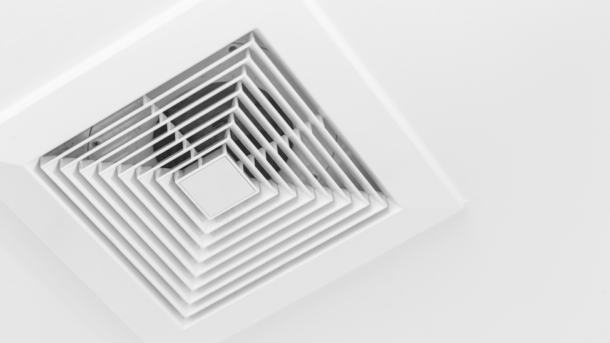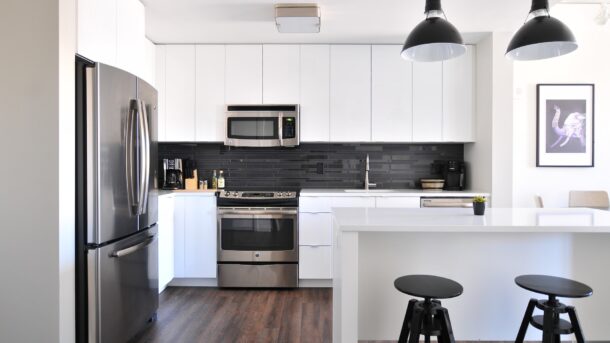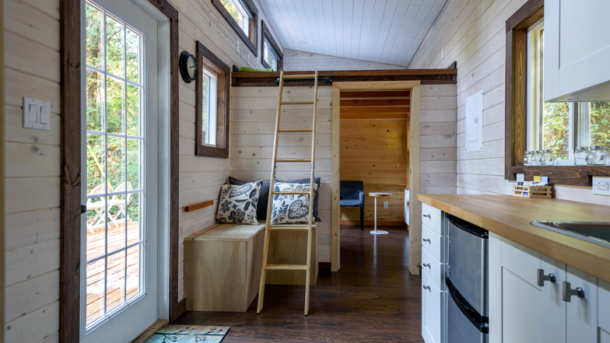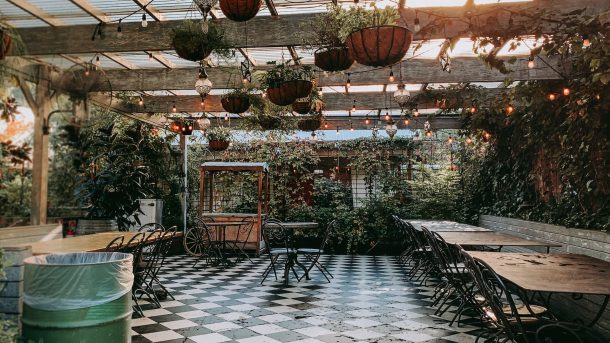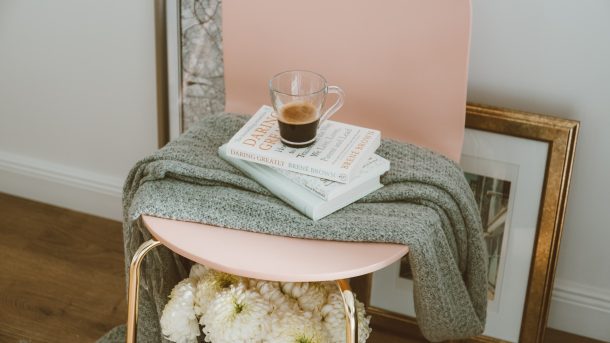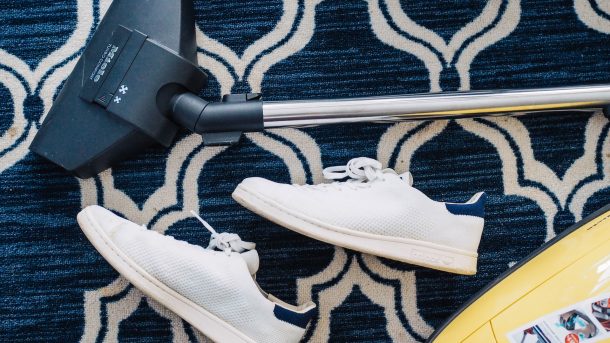Discover the artistic potential in your move through the art of upcycling! Instead of disposing of moving materials, consider their eco-friendly transformation. Convert robust cardboard boxes into chic storage solutions, repurpose packing paper for imaginative crafts, and give bubble wrap a second life as plant insulation. Upcycling not only minimizes waste but also adds a personal touch to your new environment. Immerse yourself in the realm of sustainable creativity, where old moving materials take on new roles, providing practical solutions and a chance to showcase your individual style. Embrace upcycling and turn your move into a green and uniquely expressive journey!
Infographic created by Moving Proz, a full service moving company.admin
Uncovering the Benefits of Professional Air Duct Repair for Homeowners
As a homeowner, you are responsible for keeping your house in good condition and ensuring the health and comfort of your family. A critical aspect of home maintenance is ensuring your HVAC system runs efficiently. Air ducts play a crucial role in a properly functioning HVAC system, and it is important to maintain them. However, air ducts can become damaged or clogged over time, leading to decreased indoor air quality, reduced energy efficiency, and a host of other issues. In this post, explore the benefits of professional air duct repair for homeowners.
Improved indoor air quality
Air ducts circulate air throughout your home. Over time, they can become clogged with dust, dirt, and other debris, leading to poor indoor air quality. This can lead to respiratory problems, especially those with allergies or asthma. Professional air duct repair can help remove any obstructions and improve the overall quality of the air in your home, ensuring that your family can breathe more easily.
Increased energy efficiency
When your air ducts are clogged or damaged, your HVAC system has to work much harder to push air through the system. This can increase energy bills, as your system works much harder than needed. By repairing your air ducts, you can improve the efficiency of your HVAC system, resulting in lower energy bills and a more comfortable home.
Improved HVAC performance
When your air ducts function properly, your HVAC system can perform at its best. This can result in better temperature control, improved air circulation, and a more comfortable home overall. By ensuring that your air ducts are properly maintained, you can extend the life of your HVAC system and avoid costly repairs down the line.
Prevent mold growth
Clogged or damaged air ducts can lead to the growth of mold, which can be dangerous for your health. Professional air duct repair can help prevent mold growth by removing obstructions and ensuring the air flows freely through your system.
Peace of mind
Finally, by hiring a professional to repair your air ducts, you can know that your system is running efficiently and safely. Professional technicians have the experience and expertise to identify and repair any issues with your air ducts, ensuring that your family is comfortable and breathing clean, fresh air.
In conclusion, professional air duct repair is essential to home maintenance. Maintaining your air ducts can improve indoor air quality, increase energy efficiency, optimize HVAC performance, prevent mold growth, and enjoy peace of mind. If you suspect your air ducts need repair, you must seek professional assistance immediately.
Essential Guide to Winter Kitchen and Plumbing Maintenance
As winter sets in, it’s essential to maintain your kitchen’s plumbing to avoid potential problems caused by the cold weather. While general kitchen maintenance, as outlined by Clean & Sensible’s Seasonal Kitchen Cleaning Checklist, includes tasks like cleaning light fixtures, cabinets, windows, and appliances, plumbing maintenance requires a bit more attention to detail to prevent freezing pipes and other winter-related issues.
General Kitchen Maintenance
Before delving into the specifics of plumbing maintenance, it’s vital to keep your kitchen clean and well-maintained. This includes:
- Light Fixtures: Regularly wipe down all light fixtures with water and an all-purpose spray. Replace bulbs as needed. For greasy light covers, remove and wash them with warm water and dish soap.
- Cabinets: Dust the tops of cabinets, especially if they don’t reach the ceiling, and consider using wax paper to catch dust and prevent grease buildup.
- Windows: Clean window treatments, blinds, and windows themselves, using warm water and dish soap for particularly dirty blinds.
- Walls, Backsplash, and Surfaces: Start from the top and work your way down, cleaning with an all-purpose cleaner and a microfiber cloth.
- Sink and Appliances: Keep the sink and appliances like the dishwasher, microwave, and oven clean and well-maintained.
Winter Plumbing Maintenance
Once your kitchen is clean, it’s time to focus on winter-specific plumbing maintenance:
- Inspect Pipes for Insulation: Check under your kitchen sink and in any exposed areas for pipes that may be susceptible to freezing. Insulate these pipes with foam pipe insulation to prevent freezing and potential bursting.
- Cabinet Doors: During extremely cold nights, keep cabinet doors open under the kitchen sink to allow warmer air to circulate around the pipes.
- Faucet Drips: Allow a slight drip from your faucets during very cold weather. This keeps water moving, making it less likely to freeze inside the pipes.
- Seal Leaks: Look for any leaks around windows and doors that might let in cold air, and seal them. Even a small draft can cause pipes to freeze.
- Drain Maintenance: Regularly clean your drain. Avoid pouring grease down the drain, as it can solidify and cause blockages, especially in colder temperatures.
- Emergency Shut-Off Valve: Know the location of your emergency shut-off valve in case a pipe does burst. This will help minimize water damage.
- Professional Inspection: Consider having a professional plumber inspect your kitchen’s plumbing system before winter sets in. They can identify potential issues and provide solutions to avoid winter plumbing disasters.
While regular kitchen maintenance is crucial, special attention should be given to plumbing during the winter months. By following these steps and combining them with the general maintenance tips, you can ensure a well-maintained and problem-free kitchen throughout the cold season. Remember, prevention is key to avoiding costly and inconvenient repairs.
How to Make the Most of Cramped Living Spaces
Source: ppa/Shutterstock.com
Living in a cramped living space or a tiny apartment can feel limiting, but with the right strategies and creative design ideas, it’s possible to make the most of small square footage and create a cozy, comfortable area that feels spacious and uncluttered. There are plenty of ways to maximize your space, make your space feel bigger and, ultimately, live quite comfortably in a small home or apartment. Just because you don’t have a ton of room doesn’t mean you can’t have the best mattresses for quality sleep or amazing living room furniture for hosting. Let’s explore some of these small space ideas and how to get creative with your living space.
How to Prevent Your Small Space from Feeling Claustrophobic
Tip 1: Use Mirrors to Make a Small Space Feel Bigger
A powerful tool in your design toolkit, mirrors can help you make a room look bigger by bouncing light around, creating the illusion of extra space. Positioning a mirror across a window can also enhance the natural light in the room, making the space feel less cramped and more airy.
Tip 2: Choose Furniture with Exposed Legs
When it comes to choosing pieces of furniture for small spaces, opt for designs with exposed legs. These types of furniture allow you to see through to the edge of the room, making the space feel bigger than it actually is. This simple trick can transform your small living room into a roomy sanctuary.
Tip 3: Adopt Minimalist Living for a Less Cluttered Life
Clutter can make a small space feel even more cramped. Adopting minimalist living can free up a lot of room while also enhancing your mental well-being. The fewer items you have, the larger your living space will appear. Choosing functional, streamlined furniture and keeping decorative items to a minimum are important steps toward decluttering.
How to Maximize a Small Home’s Closet and Wall Spaces
Trip 1: Use Shelving to Maximize Your Wall Space
Vertical space is often overlooked in small spaces, yet it’s an excellent way to maximize your space. Installing shelves from floor to ceiling on your wall can provide a storage solution without cluttering up your living area. This helps keep your floor space clear and your rooms feeling spacious and uncluttered.
Tip 2: Get Creative with Closet Space
In a small apartment, closets are not just for clothes. They can be transformed into a home office, a mini library or even a cozy reading nook. By continuing to think outside the box, you can make the most of small spaces in your apartment and live in a space that feels larger and more functional than it actually is.

Source: chosenphotography/Shutterstock.com
Tip 3: Utilize a Gallery Wall to Optimally Use Wall Space
A gallery wall can do wonders for a small space. It not only fills up an empty wall space but also adds to the décor of the room, making the space feel personal and inviting. You can use art pieces, photographs or even wall-mounted plants for a bit of greenery in your living space.
How to Make the Most of a Small Bedroom
Tip 1: Choose the Right Mattress Size
Selecting the right mattress size is crucial in a small bedroom. You might think a smaller mattress would automatically free up space, but that’s not always the best solution. For example, a full-size Tempur-Pedic mattress offers enough comfort without overwhelming the room. Remember, your sleep quality is vital, so don’t compromise just because of room size.
Tip 2: Don’t Sacrifice Bedding Comfort
Just because you have a small bedroom doesn’t mean you should give up on comfortable bedding. Look for high-quality, soft sheets and a plush comforter that fits well on your chosen mattress size. This is one area where queen-size Casper mattresses shine — offering comfort without taking up too much space.
Tip 3: Utilize Under-Bed Storage
In a cramped bedroom, every inch of space counts. Consider bed frames that come with built-in drawers or space underneath for storage boxes. This is a discreet way to store seasonal clothing or extra bedding, helping you maximize the room’s storage potential while keeping clutter at bay.
How to Furnish and Declutter Living Spaces in Small Homes
Tip 1: Create a Multipurpose Living Area with Small Furniture
Creative room ideas can help maximize the functionality of a small apartment. Using small furniture, you can transform a single room into a multipurpose space. For example, a desk can double as a dining table, or a daybed can be used as a sofa during the day and a bed at night. This allows you to live comfortably, even with limited space.
Tip 2: Strategize to Make Your Small Space Look Bigger
Minimalist furniture can work wonders in a small space. By choosing furniture with simple lines and neutral colors, you can make your living space look bigger and feel less cluttered. Think about your needs before purchasing furniture and opt for pieces that offer additional storage space to keep clutter at bay.
Tip 3: Balance the Space Around a Small Coffee Table
If you have a small living room, maximizing your furniture arrangement can make your space feel much bigger. One trick is to opt for a small, round coffee table instead of a larger, square one. Its streamlined shape will open up floor space and the lack of sharp corners also makes it easier to navigate around, especially in restricted spaces.
How to Maximize Your Small Dining Area
Tip 1: Make Your Dining Area Feel Less Cramped with a Suitable Dining Table
The right dining table can make a world of difference in a small dining area. To make the space feel less cramped, opt for a round table. Its lack of corners will make it easier to move around and it can also accommodate more people than a square table of comparable size.
Tip 2: Appropriately Utilize Your Wall Space in the Dining Area
Utilizing wall space is just as important in the dining area as it is in the rest of your home. Consider installing floating shelves for additional storage or creating a gallery wall to add visual interest and make the dining area feel cozy and personalized.
Tip 3: Incorporate a Dining Nook In Your Small Space
If you’re tight on space, consider creating a dining nook. This could be a corner of your living room or even a converted closet. You just need a small table and a few comfy chairs or perhaps even a banquette seating. Not only will this provide a dedicated eating space, but it will also avoid cluttering up the rest of your apartment.

Source: Enrika Samulionyte/Shutterstock.com
How to Live Comfortably in a Studio Apartment
Tip 1: Understand and Maximize Floor Space
Floor space is key in a studio apartment. Therefore, it’s crucial to find ways to keep as much of it clear as possible. Choose furniture that’s proportional to the room and offers additional storage. Multifunctional pieces like a bed with drawers underneath or a coffee table with shelves can also help keep the clutter at bay.
Tip 2: Create a Living Space That Doesn’t Feel Cramped
In a studio apartment, a sofa is not always a practical option. However, if you love the idea of having a comfy place to lounge, consider a loveseat or a futon instead. They’re more compact than traditional sofas but can still provide a comfortable seating area without crowding your living space.
Tip 3: Always Strive for Efficient Use of Space
Living in a studio requires careful planning of the space. Setting up zones for different activities can make the most of the limited space while creating an efficient flow in the apartment. Define your sleeping, living and dining areas with rugs or room dividers to make the space feel organized and spacious.
Thriving When You Live in a Small Space
Living in a small space doesn’t have to feel cramped or limiting. By taking inspiration and ideas from our tips, you can transform every room into an area that reflects both comfort and functionality. Careful furniture layout and creative use of hidden storage can free up floor space, allowing your home to breathe. From your living room to your bedroom, there are plenty of ways to use what might seem like wasted space. By maximizing vertical wall areas, optimizing furniture choices and employing smart storage strategies, you can truly make the most of your small house or apartment. Your dream home isn’t determined by its size — it’s how you use the space you have.
The Only Guide You Need to Build and Plant Your Own Elevated Garden
Elevated gardening is the perfect solution to grow your favorite fruits, vegetables, and herbs in your backyard. Here, we will go over everything you need to know to build and plant your elevated garden, from selecting the right materials to choosing the best plants for your space. Read on to get started on your very own elevated garden!
Materials needed
Building and planting your elevated garden is an excellent way to enhance your outdoor space and enjoy the benefits of gardening without the inconvenience of bending or kneeling. Before you get started, you need to gather some materials. Here are the essential materials that you’ll need:
- Elevated Garden Bed Kit: You can purchase an elevated garden bed kit or create one yourself. Elevated garden bed kits are available online or in your local home improvement store.
- Soil: Quality soil is essential for healthy plant growth. Choose soil specifically formulated for raised beds, which is loose, fertile, and drains well.
- Plants or Seeds: Determine which plants you want to grow in your garden, and choose plants that thrive in your growing zone and are suitable for the available sunlight.
- Fertilizer: Good organic fertilizer can enhance soil fertility, provide essential nutrients, and improve plant growth.
- Mulch: Mulch helps to prevent soil erosion, regulate soil temperature, retain moisture, and repress weed growth.
- Watering Can or Garden Hose: Plants need regular watering, especially during the summer, so ensure you have an adequate water source.
- Gardening Gloves: Gardening gloves can protect your hands from cuts, blisters, and other injuries, especially when working with thorny plants.
- Pruning Shears: Pruning shears can help to maintain the shape and size of your plants, eliminate dead or ill branches, and promote healthy growth.
Tools needed
Now that you have your materials, it’s time to gather the tools needed for building your elevated garden. The good news is that you won’t need anything too fancy or specialized. Here’s a list of the tools you’ll need:
- Measuring tape
- Saw (a circular saw or handsaw will work)
- Drill (a cordless drill will make the job easier)
- Screwdriver bits (make sure you have the right size for your screws)
- Clamps (to hold pieces in place while you’re drilling and screwing)
It’s also a good idea to have safety goggles and work gloves on hand, just in case. Once you have everything gathered, you’re ready to start building your garden!
Building the garden
Once you have all your materials and tools, it’s time to start building your elevated garden. Follow these steps to ensure a successful build:
- Measure and cut the wood. First, measure and cut the wood to your desired size. This will depend on how big you want your garden to be and your available space size.
- Next, assemble the sides of the garden. Assemble the sides. Make sure the corners are square and level. You can use screws, nails, or brackets to connect the pieces of wood.
- Add the bottom and legs. Once you have the sides assembled, add the bottom piece of wood to create the base of the garden. Then, attach the legs to elevate the garden to your desired height.
- Sand and paint (optional). If you want your garden polished, sand the wood to remove rough edges. You can also paint or stain the wood to add color to your garden.
- Line with mesh or fabric (optional). To prevent soil from leaking out of the garden, line the bottom and sides with mesh or fabric. This is optional but recommended to ensure your garden stays neat.
Building an elevated garden can take a few hours or an entire weekend, depending on your skill level and the size of your garden. Take your time and follow directions carefully to ensure a sturdy and long-lasting structure.
Planting the garden
Now that your elevated garden is built and ready to go, it’s time to start planting! Here are some suggestions to help you get started:
- Choose your plants wisely: Choose plants that will thrive in your area’s climate and suit an elevated garden. Some good options include lettuce, herbs, cherry tomatoes, peppers, and cucumbers.
- Plan your layout: Before planting, it’s a good idea to plan where each plant will go. Make sure you give each plant enough space to grow, and group plants with similar water and sunlight needs together.
- Add soil and compost: Fill your elevated garden with a good quality soil mix and add compost to give your plants the nutrients they need to grow. Make sure you leave enough space at the top of the garden for watering.
- Plant your seeds or seedlings: Follow the instructions on your seed packets or plant labels to ensure you’re planting each type of plant correctly. If you’re planting seeds, cover them with a light layer of soil.
- Water and fertilize regularly: Once your plants are in the ground, water them regularly. Elevated gardens dry out more quickly than traditional ones, so keeping them well-hydrated is important. You can also add a liquid fertilizer to your watering can to boost your plants.
- Harvest and enjoy: Depending on your chosen plants, you should start seeing some growth within a few weeks. As your plants mature, harvest them regularly and enjoy the fruits (or veggies) of your labor!
Maintenance
After all the hard work of building and planting your elevated garden, it’s important to keep it well-maintained to ensure the health and growth of your plants:
- Watering: Regular watering is vital to keeping your garden healthy. Make sure to water your plants frequently, especially during hot weather. The best time to water is early morning or late evening when the sun isn’t too intense.
- Fertilizing: Add fertilizer to your garden soil at the beginning of the growing season to boost your plants. Continue to add fertilizer throughout the season as needed, following the instructions on the package.
- Weeding: Keep an eye out for any unwanted plants (weeds) that may try to invade your garden. Pull them out as soon as you see them to prevent them from spreading and stealing nutrients from your plants.
- Pest Control: Pests like aphids, slugs, and snails may enter your garden. To keep them under control, you can use natural methods such as introducing beneficial insects or making homemade insect repellents. If the pest infestation is too severe, you may need commercial pest control products.
- Harvesting: As your plants mature, they must be harvested regularly. This will not only provide you with fresh produce, but it will also encourage more growth and productivity from your plants.
Congratulations, you have successfully built and planted your elevated garden! Anyone can create their garden oasis with the right materials, tools, and guidance. Not only is gardening a fulfilling and relaxing hobby, but it also provides fresh and organic produce for your home. Following this guide, you have stepped towards a sustainable and self-sufficient lifestyle. Remember to keep up with regular maintenance and have a garden shed nearby for convenience to enjoy the fruits of your labor. Happy gardening!
8 Eco-Friendly Electric Decor Options

Good lighting can easily transform the general mood of your home. Whether you want to add spaciousness or make your home more aesthetically pleasing, there are plenty of options available.
However, you should note that the more power you use, the more pollution is generated to meet your energy needs. It’s also going to raise your power bill. That’s why it’s advisable to go for eco-friendly electric decor alternatives. These options will significantly reduce your carbon footprint while elevating the mood of your living space.
1. Rechargeable Battery Candles
If you want a combination of elegance and eco-friendliness, you should get rechargeable battery candles. Their warm, soft glow makes them a great selection for any space. Whether you prefer a big, dramatic candle or a small, intricate option, you will not miss one that best suits your taste. They’re super power efficient, and since they’re rechargeable, you don’t go through disposable batteries, which will just end up in a landfill.
2. LED Puck Lights
Add a modern and stylish feel to your home by installing LED puck lights. The small, circular lights are excellent at drawing attention to specific areas of your home. To add a touch of sophistication to your home, place them on an accent wall or near a piece of art.
You can select any style of puck light decor depending on the general feel of your home. There are sleek and modern designs and rustic options designed to bring out your personality. If you don’t want lighting that commands too much attention, you can tuck them away to achieve a polished and seamless look in your home.
3. Upcycled Lighting Fixtures
Made from reclaimed wood, discarded metal pipes, and vintage glassware, upcycled lighting fixtures are great for adding personality to your home decor. If you like unique and vintage designs, you can use the fixtures to bring out a nostalgic and warm feel to your home.
4. LED Neon Signs

You can add to the personality of your home decor by getting an LED neon sign. The natural, soft, and vibrant light enhances a room’s general mood and style. Whether it’s a silly quote or whimsical art, you will not run out of options that suit your taste.
“The best LED neon signs have a personalized touch,” says Tom Numan, President of Radikal Neon®. “They also run on a fraction of the power that traditional neon uses. Less power draw means less heat, lower bills, and a smaller carbon footprint.”
Tom Numan leads a team of professionals who create neon signs that reflect their clients’ unique designs. Go check out their official website for plenty of inspiration and to customize your own!
5. LED Pendant Lights
If you keep up with top furniture trends, you will note that most homeowners are going for curvy aesthetics. You can get a sleek and contemporary design or a classic and rustic finish to fit your taste seamlessly.
To enhance the overall decor of your home, you should place the pendant in dining rooms, entryways, kitchens, or even bedrooms. They will create an inviting and warm ambiance in any of the spaces. You can also use them to create a focal point and draw attention to any specific feature.
6. LED Strip Lights
LED strip lights will accentuate any feature you want in your home. Whether you want to highlight your staircase, artwork, or cabinet, the lights will bring a touch of elegance and modernity.
7. LED String Lights
You can add a touch of warmth and whimsy to your home by adding LED string lights. Commonly referred to as fairy lights, they create a cozy and inviting atmosphere with their soft and warm glow.
If you are a fan of DIY home projects, look into hanging them from the ceiling. You can also drape the lights on furniture or wrap them around a plant for the ultimate visual aesthetic. Most homeowners use them to highlight specific features like staircases or dining tables. They are also great for accentuating pieces of artwork or acting as decorative accents.
8. LED Table Lamps
Add a touch of versatility and stylishness to your spaces by getting an eco-friendly table lamp. Most homeowners experiment with different colors and brightness levels to complement their space’s style and scheme.
Enhance Your Home with Eco-Friendly Electric Decor
Numerous eco-friendly electric decor options can significantly improve the aesthetics of your home. Whether you are looking for subtle or statement decor, you can’t miss an alternative to suit your style or preference best. Start small by incorporating a classic neon sign or LED string light before going for major purchases. With these affordable electric decor options, you can transform any area to reflect your personality and improve the overall ambiance.
Are Gutters Necessary for Illinois Properties?
When you think of your roof’s health, do you think about the gutters? Do you know what gutters do and how they protect your Buffalo Grove roofing system? Whether you are facing a spring rain shower, dealing with snow buildup, or have leaves on your roof from the fall, your gutters are an integral part of your home’s protection from the elements.
Are Gutters Necessary?
Gutters are system of horizontal channels, usually made of metal, with vertical piping that is used to direct and control the flow of water from your roof. As a homeowner, you may be asking yourself, are gutters really necessary, or can you just let water flow anywhere from your roof? The answer is yes, they are a vital component to ensuring your home is protected.
Modern homes are designed to conserve energy. These same designs can lead to homes trapping moisture where not intended. On your roof, if there is water that is left sitting, this moisture can penetrate the materials and lead to damage in the home and build up of mold and mildew. A properly installed gutter system can help ensure that this moisture is carried away from any potential trouble spots on your roof.
Gutters are not only beneficial for what is above your head. If your home does not have gutters, water runoff from rain or snow melt will fall directly to the ground next to your foundation. This can be very bad over the long term. Immediately after a rain shower, you may find that the extra water can cause damage to gardens or flowerbeds that are next to your home. While annoying and potentially expensive, the real danger can with your foundation. The extra moisture can degrade the ground around your house. As a result, your home may settle in a way which can lead to cracks and instabilities in other parts of the house. A well designed gutter system will take this water and channel it away from the house, preserving your foundation and protecting your home.
What Else Should You Consider?
Having gutters installed is the most crucial step in protecting your home from moisture, but it is just the first thing to consider. If you find your gutters overflow, or notice there is till water buildup somewhere, you may need maintenance. If your gutters are noticeably damaged, it may be time to replace part or all of your system.
What Can Cause These Issues?
- Storm damage.
- Corrosion from improper materials.
- Improper installation.
- Clogged gutters from leaves or other obstructions.
- Clogged downspouts.
- Excessive ice buildup.
- Foundation shifts.
- Other damage near gutter system.
- Other physical damage.
If you notice any of these issues, don’t panic, a professional roofing contractor can help. Majority of professionals have seen all sorts of issues from missing to clogged to damaged and everything in between, our crew is ready with solutions for you. Homes in the greater Buffalo Grove, Illinois area faces all sorts of weather patterns which can take a toll on your home. We can insure that your gutter system is installed properly for your new roof, and we can help maintain and repair it should you face problems.
Ready To Assess Your Gutter System?
A proper gutter solution can protect your foundation, reduce pests from getting in your home, and keep you home looking good. Your home is a major investment, and by ensuring your gutter system is providing you the best possible protection, you will save money in the long run. Home repairs and renovations can be expensive, wouldn’t you prefer the peace of mind that you are doing what you can to reduce the risk of major repairs? Contact our Buffalo Grove roof replacement team today and we will schedule an assessment of your gutter system. We can offer recommendations and provide you with quotes to ensure that you have the right setup for your needs.
7 Tips for Keeping Your Carpet Clean
The reality is that most of us aren’t doing a deep cleaning of our carpets as often as we should. Even if you aren’t routinely shampooing your carpet, you can take some preventative measures to help keep your carpet smelling fresh and looking nice. It could be as simple as taking your shoes off at home before you step on the carpet or using a pet hair remover brush on your carpet to help get rid of pesky dog or cat fur. Use any of these seven helpful tips for keeping your carpet clean and you’ll be well on your way to a much cleaner and better-smelling home in no time.
Continue reading…DIY Winter Home Improvement Projects
As the temperature dips, it’s time to go into hibernation mode for many families. With more time spent at home, it’s natural to think about taking on home improvement projects to make your home more comfortable. There are endless updates that you could consider for your home, both inside and outside. Staying focused can help you start and finish projects. These are projects to consider inside your home that can increase your comfort level this winter.
Continue reading…Pregnancy and Moving: How to Take Care of Yourself and Your Baby
If you are pregnant while you are moving, its critical to listen to your body and stay positive throughout the experience. You want to avoid putting extra stress on your body. While stress cannot be completely removed from the situation, there are a few things you can do to make the situation less stressful.
For tips on how to achieve this, please check out the below infographic.
Graphic created by New City Moving, local short distance movers in Chicago.


